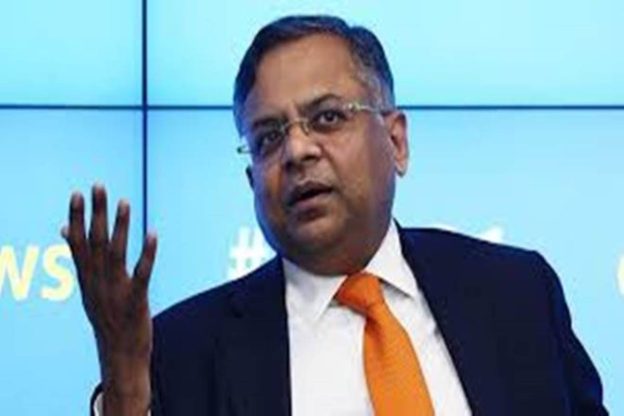Tata Sons chairman N Chandrasekaran said in a letter to the employees that the Group’s strategy looking ahead will be based on four themes —digital, new energy, supply chain resilience and health.
As the year comes to end, Tata Sons chairman outlined the Group’s strategy looking ahead in a letter to the employees. N Chandrasekaran wrote that the strategy will be based on four themes — digital, new energy, supply chain resilience, and health. “Our group companies are already adapting to the above changes, and we are witnessing a stronger performance. Our new pilots and businesses, from 5G to TataNeu and Tata Electronics, are poised to benefit from these four themes going forward,” he said.
He also added the IMF has predicted that the Indian economy will grow by 8.5 per cent in the next year — well above the global average of 4.9 per cent — and, as a business, Tata Group is to play its part in the evolution of the country.
While Chandrasekharan might have outlined the strategy for the Tata Group, the four themes also outline the Indian economy’s growth trajectory to achieve the predicted 8.5 per cent growth. The stage to grow in the digital spectrum has already been set as India has already emerged as one of the biggest and fastest-growing digital consumer bases, which was digitalising faster than many of the more mature economies by 2020. Earlier this year, according to reports by RedSeer released at its flagship event Ground Zero 5.0 said that India’s consumer digital economy is expected to become an $800 billion market by 2030. This was pegged at $85-90 billion in the 2020 calendar year.
When it comes to new energy, India’s ambitious new targets committed in the COP26 summit are a promising initiative to increase reliance on renewables. As of now, the new investments in the clean energy sector stood at $6.2 billion in 2020. The country already has an installed renewable energy generation capacity of a little over 150 GW. By 2022, it aims to reach 175 GW, of which 100 GW would be from solar, 60 GW from wind, 10 GW from bio-power and 5 GW from small hydropower projects. Post the COP commitment, the renewable energy sector is set to boom. This growth spurt is also set to attract rewarding investments. Days ago, media reported Power and New and Renewable Energy Minister RK Singh predicting a likely investment of over $15 billion in 2022 as the government focuses on electric vehicles, green hydrogen and manufacturing solar equipment.
As India partners with economies like Japan and Australia in initiatives to build supply chain resilience it is aiming to attain strong, sustainable, balanced and inclusive growth. While the pandemic has been a certain disruption, revealing supply chain vulnerabilities, the country has also been building resilience to protect its manufacturing sectors and competitiveness. With partnerships like Quad stretching beyond strategic cooperation, India is placed to become an economic pivot with the support from other members and very well spearhead Quad’s agenda of supply chain resilience. With its thrust on telecommunications and electronic manufacturing sectors, and by addressing the supply chain dependencies, India is at a vantage point.
With the pandemic, the health industry has become more lucrative than ever before. From producing indigenous vaccinations to extending diplomatic ties through Vaccine Maitri, India has been at the frontline in battling the world’s biggest health crisis of our times. India’s premier think tank NITI Aayog presented a report in March this year that outlined the range of investment opportunities in the country’s healthcare sector such as hospitals, medical devices and equipment, health insurance, clinical trials, telemedicine and medical tourism.
With the pandemic opening up several opportunities in the health systems, India’s healthcare sector is expected to reach $372 billion in 2022, registering a compounded annual growth rate (CAGR) of around 22 per cent since 2016, more so because of the pandemic. According to the report, India’s relative cost competitiveness and availability of skilled labour are making it an increasingly favoured destination for medical value travel. Further, the hospital segment opens up attractive investment opportunities for private players in tier-2 and tier-3 cities. Even in pharmaceuticals, the country can boost domestic manufacturing, supported by government schemes with performance-linked sops, the report outlined.
As India sets its ambitions to become a $3 trillion economy by 2024, the strategy given by the Chairman for Tata Group is a mirror to India’s growth trajectory and the strategy to achieve it.
https://www.timesnownews.com/business-economy/industry/article/tata-sons-chairman-says-future-growth-will-hinge-on-four-themes-how-these-also-reflect-india-s-growth-trajectory/844483





